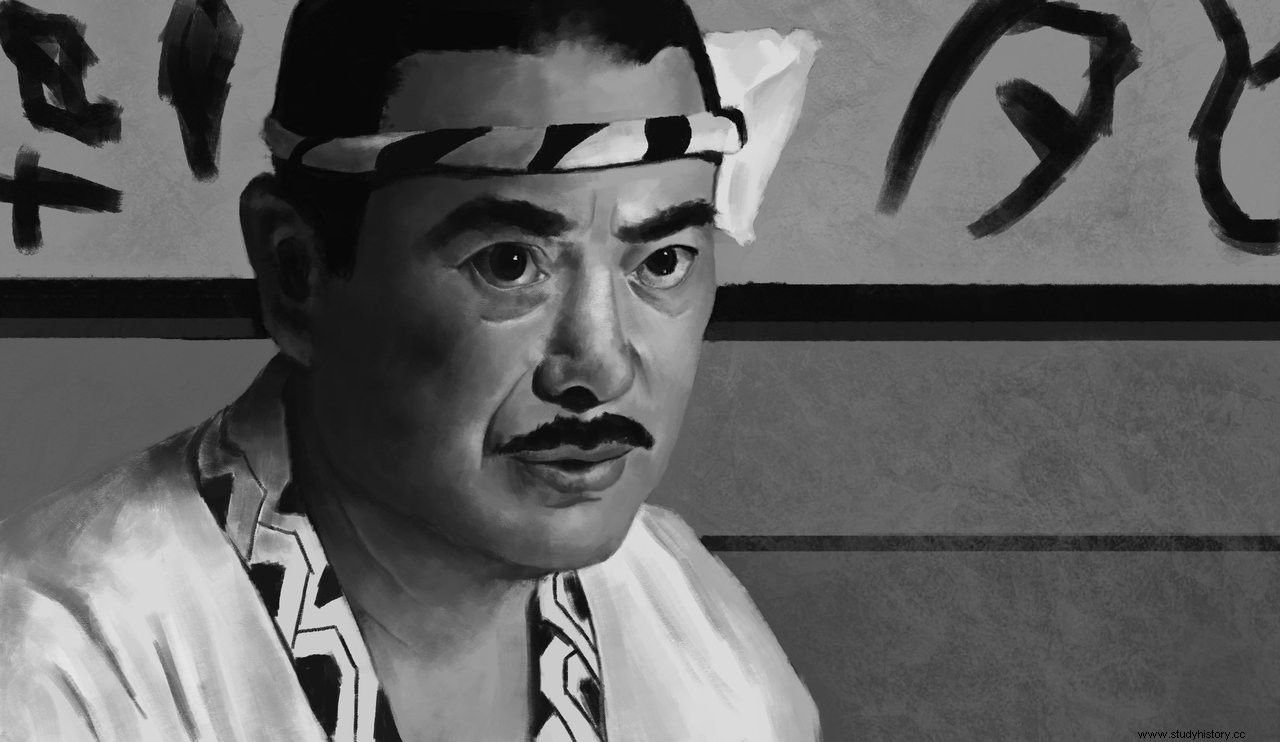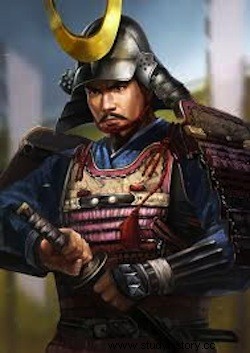Few know that Hattori Hanzo is more than just the master blacksmith and part-time sushi chef that Quentin Tarantino introduces us to in his movie Kill Bill . The character played by Sonny Chiba is, in fact, a nod to the historical Hattori Hanzo, whom the same actor brought to life on the small Japanese screen in the legendary seventies serial Kage no Gundan ("The command of the shadows"). From that already mythical sword-cloak series, in which Hanzo appears characterized as a ninja with weapons to take, the popularity of the character skyrocketed to the point of earning a lifelong position in the collective imagination of the Japanese. So much so that, nowadays, it is not difficult to find it in video games, manga and novels of the most diverse fur. It's easy to see where Tarantino's inspiration came from. As we said, the Hattori Hanzo from Kage no Gundan is based on a historical character of the same name, with a life almost as adventurous and eventful as his cathodic alter ego. And even today, in the 21st century, he is still very present in the lives of the inhabitants of metropolitan Tokyo.

Sonny Chiba playing Hattori Hanzo in Kill Bill
Any visitor who enters the streets of Tokyo will find numerous echoes of its past as the capital of the Tokugawa shogunate (1600 – 1868), when the city was called Edo and much of its population wore swords at their belts. Without going any further, if you want to take a stroll around the old Edo castle, where the Tokugawa shoguns once lived and today the emperor and his family reside, you can take the Hanzomon and even get off at the station of the same name. Hanzomon means "Door of Hanzo" in Japanese and, as the astute reader will have undoubtedly noticed, it refers to Hattori Hanzo himself. Why? Well, because the Hanzo Gate, Hanzomon, is one of the gates that guard the walls of the old Edo castle. Castle that, as we have said, is today the Imperial Palace of Tokyo. The gate in question is named after Hattori Hanzo himself. (1541 – 1596), who had his residence nearby. He and his descendants were in charge of guarding that gate for generations, and by extension all those that mark the walls of Edo castle. Let's see why this good man enjoyed such an honor.
This Hanzo was a tough guy. His feats may fall short compared to Sonny Chiba's weekly stunts and his TV ninjas, but they're nonetheless impressive. Not for nothing did he earn the nickname of Oni Hanzo , that is, the Devil Hanzo . Some of his deeds were key to the history of Japan, such as saving the neck of Tokugawa Ieyasu himself .

Tokugawa Ieyasu
In 1582, several years before he became shogun and unified all of Japan under his rule, Ieyasu was in dire straits. The first great unifier of the empire, Oda Nobunaga , he had just been treacherously murdered at the hands of one of his own generals. In just a few hours, the fragile seams that held the empire together were shattered. Revolts and uprisings were brewing everywhere. Chaos descended on Japan again. The news caught Ieyasu, Nobunaga's ally and vassal, in the worst possible position:with his troops scattered and lost around Osaka. , in the middle of enemy territory, many journeys away from his domain. Harassed on all sides by rebel guerrillas, the only way out was to return by forced marches to his base in Mikawa , fiefdom of the Tokugawa, to try to reorganize. But that meant traversing more than two hundred kilometers through hostile and unknown terrain, with hardly any soldiers or supplies, and with the unruly hosts at their heels. The chances of saving his skin seemed slim.
And with that, Hanzo stepped forward.
A native of the area, Hanzo suggested taking an alternate route through Iga province. which he knew well. Neither short nor lazy he put himself at the head of the Tokugawa convoy and, thanks to his contacts in the area and his knowledge of the terrain, got them back home in record time. Rather than lead the battered remnants of Ieyasu's army, he literally made them vanish into the very jaws of his pursuers. Hanzo's unorthodox arts, knowledge of the terrain, and mastery of commando-style moves had saved the future lord of Japan from certain disaster.
Sometimes in the front line and many others moving in the shadows, like a good ninja, this was not the first nor would it be the last mission in which Hanzo would provide exceptional services to the Tokugawa. Secret agents, spies, commandos, strike force, guard... Hanzo and his 200 , his bodyguard made up of Iga natives like himself, earned legendary fame. Much of the halo of mystery and legend that surrounds the figure of the ninja warrior inside and outside of Japan, which has become so exaggerated in popular culture, is due to the exploits of this true "commando of the shadows ” which operated under the command of Devil Hanzo.
In gratitude for such an impeccable record of service, Ieyasu made Hanzo one of his favored vassals. When he settled in Edo and turned this once-popular fishing village into the empire's capital, the ever-shrewd Ieyasu bestowed on Hanzo the honor of guarding one of the main gates to the castle where the Tokugawa family itself resided. Hence, that door will remain for posterity as the Hanzo Door. In today's Tokyo there is no longer any remains of Hanzo's mansion, just a small commemorative plaque in the place where it once stood. But even today, in the walls that protect the old castle, now an imperial palace, you can visit the Hanzo gate. The subway line that departs from the adjacent station, Hanzomon, takes its name from there, keeping alive the legacy of this key figure in the centuries-old history of modern Tokyo.
Collaboration of R. Ibarzabal from Samurai Stories
Sources and images:The Maker of Modern Japan:The Life of Tokugawa Ieyasu – Arthur L. Sadler, Devian Art
